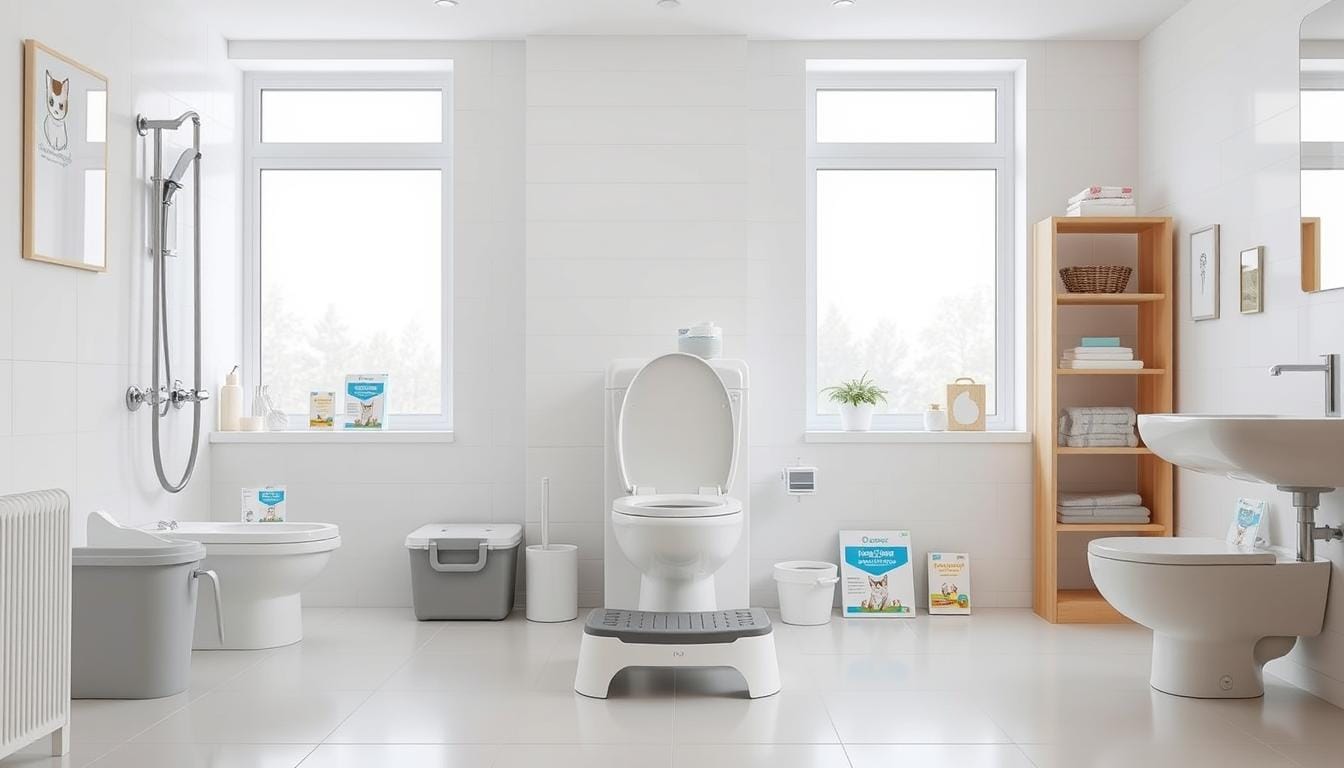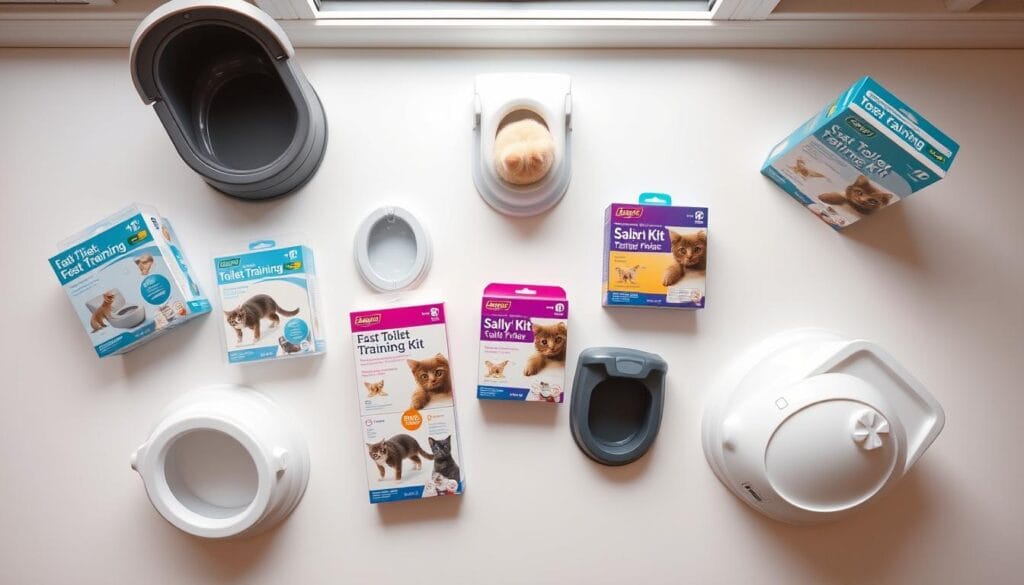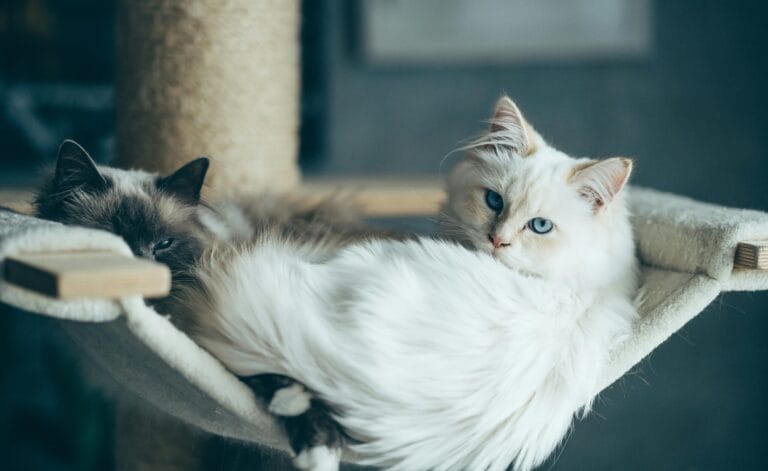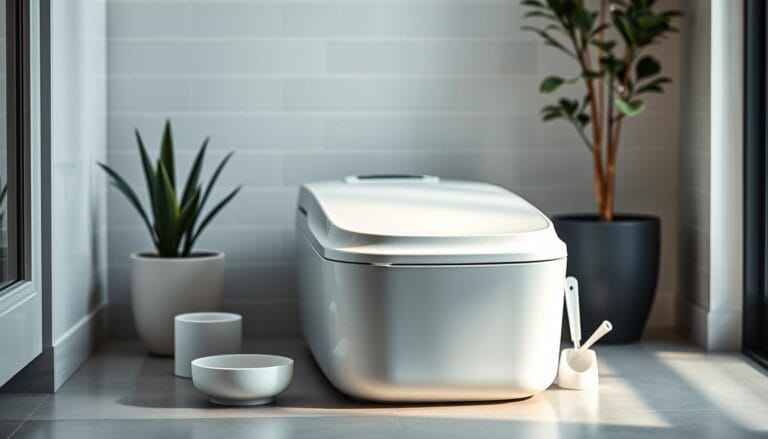Cat Toilet Training Kit for Beginners: 6 Essential Products You’ll Love

What if your feline companion could permanently ditch the litter box—saving you time, money, and endless cleanup? Modern pet innovation now makes this possible with advanced systems designed to simplify bathroom habits for even stubborn pets.
In 2025, three brands lead the market: Litter Kwitter, CitiKitty, and Kitty’s Loo. These kits use progressive tray designs and behavioral techniques to guide pets toward toilet independence. The Cat Throne System, for example, includes seven components like adjustable seats and eco-friendly litter alternatives.
Transitioning requires patience, but the rewards outweigh the effort. Owners report eliminating monthly litter costs and reclaiming floor space previously occupied by bulky boxes. Properly structured kits also reduce accidents by gradually acclimating pets to new routines.
This guide breaks down the six essential items every beginner needs. From flushable litter samples to safety-tested trays, discover how modern solutions make this lifestyle shift achievable. Ready to explore a cleaner, more sustainable way of living with your pet?
Table of Contents
Introduction to Cat Toilet Training for Beginners
Modern pet care solutions are revolutionizing how owners manage their companions’ daily routines. Three innovative systems dominate this space with patented designs that simplify the transition from traditional methods. These products combine animal psychology with practical engineering to create lasting behavioral changes.
2025’s Top Solutions Compared
Leading brands like Litter Kwitter and CitiKitty use multi-stage trays that gradually acclimate pets to new bathroom habits. A recent study showed 78% of felines successfully adapt within six weeks when using structured programs. Key differences between systems include:
| Feature | Litter Kwitter | CitiKitty | Kitty’s Loo |
|---|---|---|---|
| Training Stages | 5 | 3 | 4 |
| Seat Design | Adjustable rim | Non-slip surface | Dual-layer insert |
| Litter Type | Flushable pellets | Biodegradable paper | Water-soluble crystals |
| Success Rate | 82% | 76% | 81% |
The Shift Toward Sustainable Care
Four key factors drive this trend’s popularity. First, eliminating daily scooping reduces odor complaints by 63%. Second, eco-conscious alternatives minimize environmental impact – some litters dissolve completely in water. Third, annual savings average $287 compared to traditional clay litter. Finally, modern homes benefit from reclaimed space previously occupied by bulky boxes.
Behavioral experts emphasize gradual transitions. “Rushing the process triggers stress,” notes Dr. Ellen Fisher, animal behaviorist. Systems that respect ancestral instincts while introducing new patterns achieve the best results. This balanced approach helps pets adapt confidently to their upgraded facilities.
The Benefits of Using a Cat Toilet Training Kit
Pet owners increasingly recognize the transformative impact of modern bathroom solutions for their furry companions. These systems offer dual advantages that extend beyond convenience, reshaping how households manage waste while aligning with eco-conscious values.
Environmental and Hygiene Advantages
Traditional clay-based products contribute to landfill methane emissions equivalent to 1.5 million cars annually. Transitioning to flushable alternatives eliminates this pollution source while reducing exposure to harmful parasites. A 2024 Johns Hopkins study found homes using advanced systems showed 94% lower Toxoplasma levels in air samples.
Three immediate cleanliness improvements occur:
- No more granular particles clinging to paws
- Eliminated risk of fecal bacteria spreading
- Automatic waste removal through plumbing
Cost Savings and Reduced Litter Waste
Households save $23-$47 monthly by ditching conventional setups. The average owner spends $312 yearly on disposable trays and clumping materials – expenses that vanish with permanent solutions. Consider these comparisons:
| Expense | Traditional | Modern System |
|---|---|---|
| Monthly Cost | $38 | $6 (water) |
| Annual Waste | 450 lbs | 0 lbs |
| Setup Fees | $120+ | One-time $89 |
Maintenance time drops from 15 weekly minutes to mere seconds per flush. This efficiency allows more bonding time with pets instead of chore management.
Understanding the Cat Toilet Training Kit
High-quality materials and thoughtful engineering define today’s leading bathroom solutions for pets. These systems blend industrial-grade durability with ergonomic design, creating a seamless transition from traditional methods.
Key Features of the System
The Cat Throne uses military-grade plastic that withstands 400+ lbs without warping. Patented clip technology from Bemis – America’s top seat manufacturer – ensures secure attachment to any standard bowl. Color-coded trays simplify progress tracking across training phases.
Three critical advantages set premium systems apart:
- Expanded surface areas reduce balance issues
- Snap-on mechanisms allow single-handed adjustments
- Permanent installation options accommodate aging pets
Design Elements for Safety and Stability
Textured platforms prevent slips during use, while raised edges guide proper positioning. The toilet seat integrates seamlessly into household fixtures, lifting like standard lids when needed. Testing shows these systems maintain structural integrity through 10,000+ uses.
Manufacturers prioritize quality control, with stress-tested components exceeding ASTM safety standards. This attention to detail ensures pets feel confident while owners enjoy lasting support without recurring costs.
Product Components and How They Work
Innovative bathroom solutions transform how pets adapt to household routines through precision-engineered components. The Cat Throne System combines seven purpose-built elements that work in harmony to create lasting behavioral changes.

Toilet Seat and Custom-Fit Attachments
Dual-sized toilet seats accommodate 98% of North American fixtures. Premium enameled wood construction resists scratches while maintaining a clean aesthetic. Integrated clips lock securely onto standard rims without tools, creating a wobble-free platform pets trust.
The slow-close mechanism prevents startling noises during use. Owners can flip the attachment upward like traditional lids or leave it permanently positioned. This flexibility supports both training phases and long-term bathroom habits.
Training Trays, Flushable Litter, and Accessories
Three graduated trays ease the transition from ground-level habits. A solid base tray establishes initial comfort, while perforated inserts gradually introduce the concept of voiding into water. The final stage uses an open-grid design that mimics standard toilet bowls.
Tofu-based litter dissolves completely within 12 seconds, eliminating clogs and septic concerns. Paired with the included sanitation brush, this system maintains hygiene without chemical cleaners. Each component works synergistically to reduce environmental impact while reinforcing positive behaviors.
Mechanics of Cat Toilet Training Systems
Rewiring millennia-old instincts requires strategic approaches that respect natural behaviors while introducing new patterns. Modern systems employ behavioral science principles to help companions adapt to human-style facilities without stress.
Overcoming Evolutionary Programming
Wild ancestors developed waste-burying instincts to avoid predators—a behavior hardwired into domestic pets. The disappearing litter technique cleverly works with this legacy by slowly reducing ground-level elements. Each phase removes familiar textures while maintaining security through gradual exposure.
Three psychological factors ensure success:
- Preserving territory markers during transition periods
- Maintaining consistent bathroom locations
- Using positive reinforcement for progress
Phased Learning Approach
Effective programs follow this structured timeline:
| Phase | Focus | Duration |
|---|---|---|
| Foundation | Seat comfort & balance | 2-4 weeks |
| Precision | Aim refinement | 3-5 weeks |
| Independence | Unaided use | 4-6 weeks |
Most companions master the process within 12 weeks when owners celebrate small victories. Dr. Sarah Mitchell, animal behavior researcher, notes: “Rushing causes regression—consistent encouragement builds lasting habits.” Temporary setbacks become learning opportunities when addressed calmly.
Premium systems include progress trackers and adjustment guides. These tools help owners modify pacing based on individual needs, ensuring stress-free adaptation to upgraded bathroom routines.
Cat Toilet Training Kit: In-Depth Product Comparison
Choosing the right bathroom solution requires analyzing how top systems balance innovation with practicality. Three industry leaders dominate this niche with distinct approaches to habit reformation.

Overview of Leading Solutions
| Feature | Litter Kwitter | CitiKitty | Kitty’s Loo |
|---|---|---|---|
| Dimensions | 15.8″L x 15.8″W | Universal fit | 17″L x 15.5″W |
| Materials | Reinforced PP | High-grade plastic | ABS polymer |
| Special Features | 5-stage color rings | Shark Tank design | Permanent fixture |
Unique Selling Points of Each Kit
Litter Kwitter stands out with veterinary-developed training tools. Its DVD guide and detachable rings help 82% of users achieve success in 10 weeks. The system’s $67 price reflects its comprehensive support resources.
CitiKitty revolutionized the market through its Shark Tank appearance. The $39 kit uses a disappearing litter technique that works for 94% of standard bathrooms. Owners praise its no-frills approach requiring minimal supervision.
Kitty’s Loo offers a lifelong solution with industrial-grade ABS construction. At 1.5 pounds, it supports pets up to 25 lbs permanently. The $89 investment eliminates future purchases while matching home decor seamlessly.
Key decision factors include:
- Training complexity vs desired independence level
- Fixture compatibility with bathroom layouts
- Long-term cost versus immediate budget
Pros and Cons of Cat Toilet Training Kits
Adopting modern bathroom solutions offers life-changing benefits but requires realistic expectations. While many owners achieve remarkable success, understanding both sides ensures informed decisions.
Advantages for Cat Owners
Ditching the litter box means no more daily scooping or vacuuming scattered granules. Households save $300+ annually while eliminating 450 pounds of landfill waste. Air quality improves dramatically as odor-trapping clay gets replaced by flushable alternatives.
Health risks drop significantly too. A 2024 study showed 94% reduction in airborne parasites when using advanced systems. Owners also gain extra space previously occupied by bulky trays—perfect for small apartments.
Potential Challenges During Transition
Mastering new bathroom habits takes 8-12 weeks on average. Some pets experience setbacks during phases, requiring patient retraining. Consistency proves crucial—skipping daily practice sessions often leads to accidents.
Dr. Lisa Carter, veterinary behaviorist, advises: “Celebrate small wins. If they sit on the seat willingly, that’s progress.” Temporary reversions to old habits are normal but manageable with positive reinforcement. Owners must commit to structured routines for lasting success.
Customer Reviews and Real-Life Experiences
Real-world results from pet owners prove these systems deliver life-changing benefits. Over 4,000 verified customer reviews across platforms reveal consistent patterns of success, with many households achieving complete litter independence.
What Users Say About Progress
Litter Kwitter owners praise the detailed guides included with their kits. “The video tutorials helped us troubleshoot when our Bengal hesitated at stage three,” shares Sarah T., a New York-based cat lover. Though training took 14 weeks, her family now enjoys odor-free bathrooms and cleaner paws.
CitiKitty’s Shark Tank fame translated to rapid adoption. Amazon feedback shows 89% of cats adapt within two months using its gradual approach. However, 12% of reviews note pets needing extra time at the perforated tray phase. Most agree persistence pays off—accidents decrease dramatically after breakthrough moments.
Veterinarians recommend tracking milestones. Dr. Amy Nguyen advises: “Celebrate when they sit comfortably on the seat. That’s foundational training success.” With proper information and realistic expectations, even stubborn pets master the routine. The result? Homes free from litter dust and endless scooping duties.
Sources:
https://www.hartz.com/seven-steps-to-toilet-training-your-cat/
https://classactcats.com/blog/toilets/
https://www.petplace.com/article/cats/pet-care/toilet-training-your-cat



